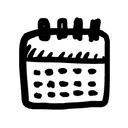 Important Dates
Important Dates
- Dec 30: Project due by 11:59 PM
- Jan 2: Grace period ends at 11:59 PM
Goals
 The Project Assignment
The Project Assignment
You will survey the kinds of writing people in your intended career do and arrange the information in a table. You’ll provide a short description of the different kinds of writing, identify the typical audiences and purposes, and classify the kinds of writing, matching the items to resources online.
Your project should meet the following criteria, which are included on the rubric:
- includes at least 10 different kinds of writing that are typical in your field.
- identifies the audience(s) and purpose(s) of each kind of writing.
- matches the kinds of writing to resources online.
- identifies ethical/intercultural and global issues that can impact the different kinds of writing.
This chart will be a go-to resource once you are in the workplace. You will also use it as you decide on the projects that you want to complete for the rest of the term.
Step-by-Step Details
Step 1: Decide on the career you will focus on for your project.
Your major and experiences may have prepared you for several careers. For this project, you need to choose one (ideally the one you are most likely to pursue after graduation) and explore this field in more detail.
You can choose any career you like. You can focus on a career related to a job or internship you have had. You can also think about an academic future if grad school is in your future.
Step 2: Review the rubric for the project.
You can aim for the grade you want to earn for each project in this course. Make sure your work is error-free, fully-developed, and ready to share with a professional audience. Any work that is incomplete or that contains multiple errors will not earn an A or an A-.
The Analysis of Writing Rubric outlines the specific requirements for the project. There are several mathematical scenarios for each grade level. Generally speaking, however, you can follow these guidelines:
-
To earn a C, turn in work that meets the satisfactory rating for criteria 1, 2, & 3, and earns at least a C-level rating for criteria 7.
-
To earn a B, turn in work that meets the satisfactory rating for criteria 1, 2, 3, & 4, and earns at least a B-level rating for criteria 7.
-
To earn an A, turn in work that meets the satisfactory rating for criteria 1, 2, 3, 4, 5 & 6, and earns at least a A-level rating for criteria 7.
 Warning: Watch Basic Writing Errors!
Warning: Watch Basic Writing Errors!
Everything you write should use accurate/appropriate image editing, grammar, spelling, punctuation, mechanics, linking, and formatting. These are important basic writing skills that you should have developed in high school.
If your work has 7 or more errors, it fails the entire project, no matter how well it meets the other criteria. In the workplace, basic writing errors make work unusable, and by extension, a large number of errors make a project unacceptable.
Step 3: Gather your data, and create your table.
Create your project in Microsoft Word. Do not use Excel or Google Drive because the formatting options are limited in those tools. Remember that formatting errors and/or poor design will lower your grade.
Do a thorough analysis of the writing in your field. Survey the kinds of writing people in your intended career do and come up with a comprehensive list. In your table, provide a short description of the different kinds of writing, identify the typical audience and purpose, and classify the kinds of writing, matching the items to the chapters in our textbook and resources online. Use these two examples to help guide your research and writing:
Think of your audience for this project as yourself. Your goal is to learn about the characteristics of the kinds of writing you will typically do in the workplace. A year from now, if you were in the workplace, you should be able to come back to this analysis to remind yourself of the kinds of features to include in a text you are writing.
You can share your draft with your writing group for peer feedback. Use the advice you receive from your readers to revise your project before the due date. There are no rewrites or revisions after work is graded.
Step 4: Write your cover memo.
I want to be sure that I understand your project, so I ask you to write a cover memo that tells me about the work you did on your project. This memo should be the first page of your project. Your table will be the second page. Both documents should be in one file.
Your memo should use standard memo format, with the headings of To:, From:, Subject:, and Date. Include this information:
- Explain a bit about your field and career so that I have some context for your project.
- Tell me about the work you put into the project.
- Tell me about anything that you had difficulty with in the project.
- Tell me how well you met the rubric requirements and what grade you believe your work will earn.
- Tell me anything else you want me to know before I grade your project.
Be sure to explain the background on your piece fully. This cover memo is where you tell me about the work you put into the project and provide some self-evaluation of your work. The cover memo is the first thing I will read, so it is your opportunity to make sure that I have all the information that I need to understand your bio statement. The cover memo is a part of your project so check it carefully for basic errors before you submit your project.
Step 5: Submit your project in Canvas.
When you are finished with your cover memo and table, you will turn in your work in Canvas, following the submission instructions.


